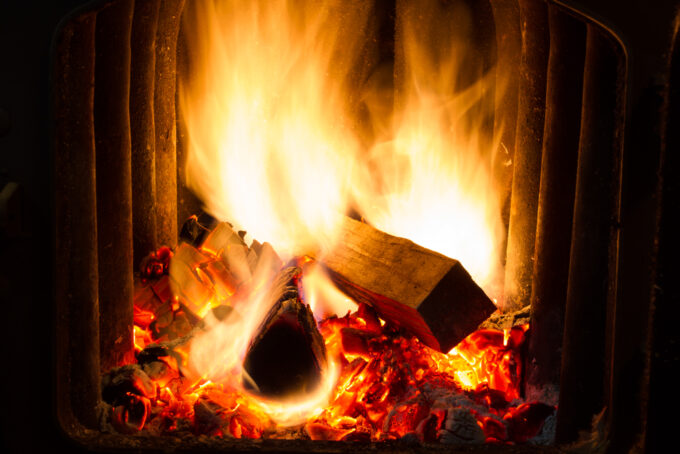Firewood contradicts health and climate protection
Firewood causes massive amounts of particulate matter. Doctors for the Environment (AefU) are calling for a stop to wood stove subsidies.

The demand for firewood is increasing. It is considered sustainable and is subsidized as supposedly climate-neutral biomass. This further fuels heating with wood. In 2021, wood-burning stoves blew around 1600 tons (t) of particulate matter with a particle diameter of less than 2.5 micrometres (PM2.5) into the air in Switzerland. That is 28 percent of total emissions of this particularly fine and therefore particularly harmful particulate matter.
This means that wood-fired heating systems contribute more to PM2.5 pollution than traffic as a whole with 1400 tons (24 percent). The balance for particulate matter PM10 is slightly more positive: in 2021, wood heating systems emitted 1700 tons or 12 percent of total emissions (traffic: approx. 4200 tons or 32 percent).
A lot of fine dust in relation to the heat output
Wood-fired furnaces therefore cause more than a quarter of the total PM2.5 pollution and over a tenth of PM10, but only generate around 11 percent of the heat output. Oil and gas-fired furnaces currently supply the large remainder, but emit "only" 75 tons of PM2.5, which corresponds to one percent of total emissions. These figures, published for the first time in this form by the specialist journal Oekoskop der Ärztinnen und Ärzte für Umweltschutz, are based on model calculations by the Federal Office for the Environment: Wood-burning stoves are particulate matter guzzlers. Particulate matter is a major and varied health hazard. The Federal Commission for Air Hygiene is therefore calling for a lowering of the limit values in accordance with the guidelines of the World Health Organization.
The correct firing technology in old stoves, modern wood-burning stoves and dust separators alleviate the fine dust problem. But they cannot solve it.
Wood-burning stoves harm the climate
As recently as 2003, the Federal Office for the Environment FOEN wrote: "Heating with wood is CO2-neutral." Today, however, it is clear that burning wood heats up the climate.
A tree binds carbon dioxide (CO2) as it grows. However, when felled and burned, the greenhouse gas is released back into the atmosphere. "The amount of carbon newly stored in (...) European forests has been decreasing for years and it can no longer be reliably assumed that the carbon released when wood is burned will be sequestered again in a timely manner," the German Federal Environment Agency recently stated.
Burning wood also releases methane, a powerful greenhouse gas, and organic compounds. Together with nitrogen oxides and solar radiation, these form the harmful irritant gas ozone, which is also active in the climate.
The fine dust emissions, sometimes mixed with soot, are deposited on ice and snow surfaces, darkening them and accelerating their melting. The less white surfaces reflect sunlight, the greater the warming. Fine dust and soot from combustion processes therefore make a double contribution to global warming. Wood should therefore not be burned, but used and reused as a building material for as long as possible.
Source: Oekoskop 3/23, AefU









